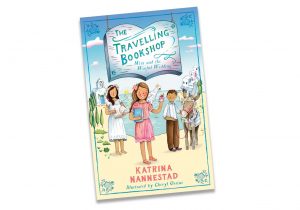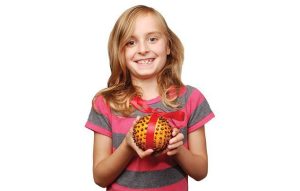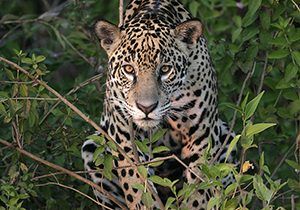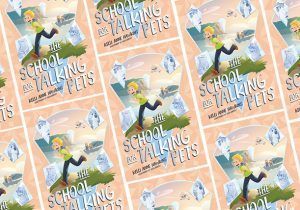
Arctic expedition primary resource
Plan an imaginary class trip to explore the extreme environment of the Arctic
*Sponsored
This Science and Geography primary resource introduces children to the environment of the Arctic. Using a fun, activity-filled expedition map, pupils have the opportunity to explore the kinds of conditions an explorer may face in this landscape. What does it take to be an Arctic explorer? What kinds of vehicles are used to move around on the Arctic tundra? How does wildlife live in these extreme environments? Where can you find the Arctic on a world map?
Using our accompanying National Geographic Kids’ lesson plan, pupils will learn about how the animals and people that are found in the Arctic have adapted to survive in the environment. The LEGO Arctic Map resource can be used as a printed handout for pupils to complete the eight missions on the map, or for display on the interactive whiteboard to complete as a whole class exercise.
Activity: As a class, discuss what the children know about the North Pole. Where is it? What’s there? What is the climate like? Use the Preparing for an Arctic adventure lesson plan download to lead your class through an exploration of what lies in store on an imaginary school trip to Alaska, in the Arctic Circle. Children will have the chance to think about Arctic conditions in the summer and winter —and the impact the temperature has on sea ice; how the polar bear is adapted to survive there and the threat that the Arctic faces in relation to global warming.
N.B. The following information for mapping the resource documents to the school curriculum is specifically tailored to the English National Curriculumand Scottish Curriculum for Excellence. We are currently working to bring specifically tailored curriculum resource links for our other territories; including South Africa, Australia and New Zealand. If you have any queries about our upcoming curriculum resource links, please email: schools@ngkids.co.uk
This Geography primary resource assists with teaching the following Key Stage 2 Geography objectives from the National Curriculum:
Pupils should be taught to:
- describe and understand key aspects of: physical geography, including: climate zones, biomes and vegetation belts, rivers, mountains, volcanoes and earthquakes, and the water cycle
- human geography, including: types of settlement and land use, economic activity including trade links, and the distribution of natural resources including energy, food, minerals and water
- name and locate counties and cities of the United Kingdom, geographical regions and their identifying human and physical characteristics, key topographical features (including hills, mountains, coasts and rivers), and land-use patterns; and understand how some of these aspects have changed over time
This Geography primary resource assists with teaching the following Social Studies Second level objective from the Scottish Curriculum for Excellence:
- By comparing my local area with a contrasting area outwith Britain, I can investigate the main features of weather and climate, discussing the impact on living things.
Scottish Curriculum for Excellence Third level Social Studies objective:
- I can investigate the relationship between climate and weather to be able to understand the causes of weather patterns within a selected climate zone.
- I can investigate the climate, physical features and living things of a natural environment different from my own and explain their interrelationship.
Scottish Curriculum for Excellence Fourth level Social Studies objective:
- I can explain how the interaction of physical systems shaped and continue to shape the Earth’s surface by assessing their impact on contrasting landscape types.
- I can demonstrate an understanding of weather and climate by explaining the relationship between weather and air pressure.
As a Science primary resource, this resource assists with teaching the following Lower Key Stage 2 Science (Year 3) objectives from the National Curriculum:
Pupils should be taught to:
- identify that animals, including humans, need the right types and amount of nutrition, and that they cannot make their own food; they get nutrition from what they eat
- Compare and contrast the diets of different animals (including their pets) and decide ways of grouping them according to what they eat. They might research different food groups and how they keep us healthy and design meals based on what they find out.
National Curriculum Lower Key Stage 2 Science (Year 4) objective:
Pupils should be taught to:
- recognise that living things can be grouped in a variety of ways
- explore and use classification keys to help group, identify and name a variety of living things in their local and wider environment
- recognise that environments can change and that this can sometimes pose dangers to living things
- construct and interpret a variety of food chains, identifying producers, predators and prey.
National Curriculum Upper Key Stage 2 Science (Year 5) objective:
Pupils should be taught to:
- describe the differences in the life cycles of a mammal, an amphibian, an insect and a bird.
This Science primary resource assists with teaching the following Sciences Second level objectives from the Scottish Curriculum for Excellence:
- I can identify and classify examples of living things, past and present, to help me appreciate their diversity. I can relate physical and behavioural characteristics to their survival or extinction.
- I can use my knowledge of the interactions and energy flow between plants and animals in ecosystems, food chains and webs. I have contributed to the design or conservation of a wildlife area.
Scottish Curriculum for Excellence Third level Sciences objectives:
- I can sample and identify living things from different habitats to compare their biodiversity and can suggest reasons for their distribution.
Scottish Curriculum for Excellence Fourth level Sciences objectives:
- I understand how animal and plant species depend on each other and how living things are adapted for survival. I can predict the impact of population growth and natural hazards on biodiversity.
Download primary resource
More Like

Mim and the Woeful Wedding

How to make a Christmas pomander

Jaguar facts









LEAVE A COMMENT
THANK YOU
Your comment will be checked and approved shortly.
WELL DONE,
YOUR COMMENT
HAS BEEN ADDED!
COMMENTS
Waw
CUSTOMIZE YOUR AVATAR